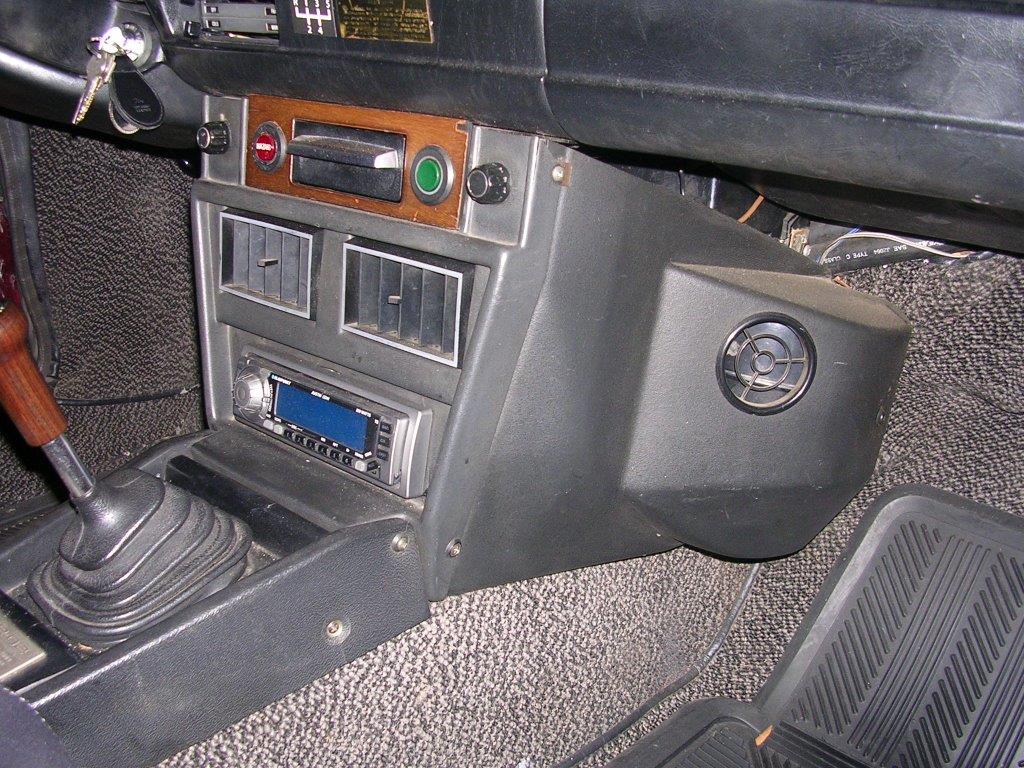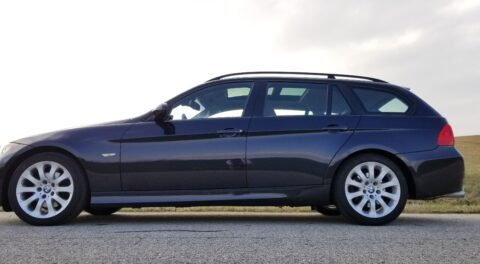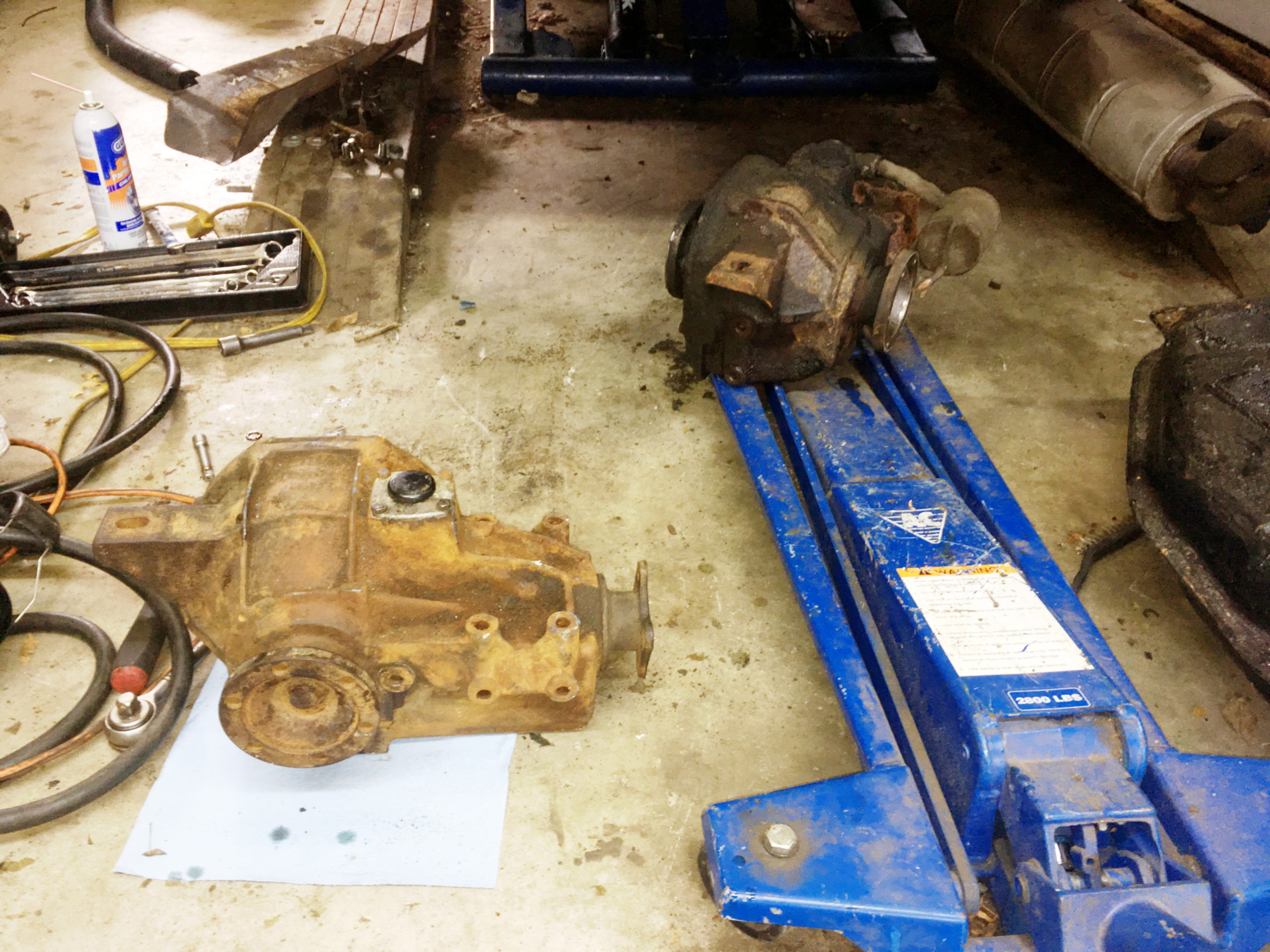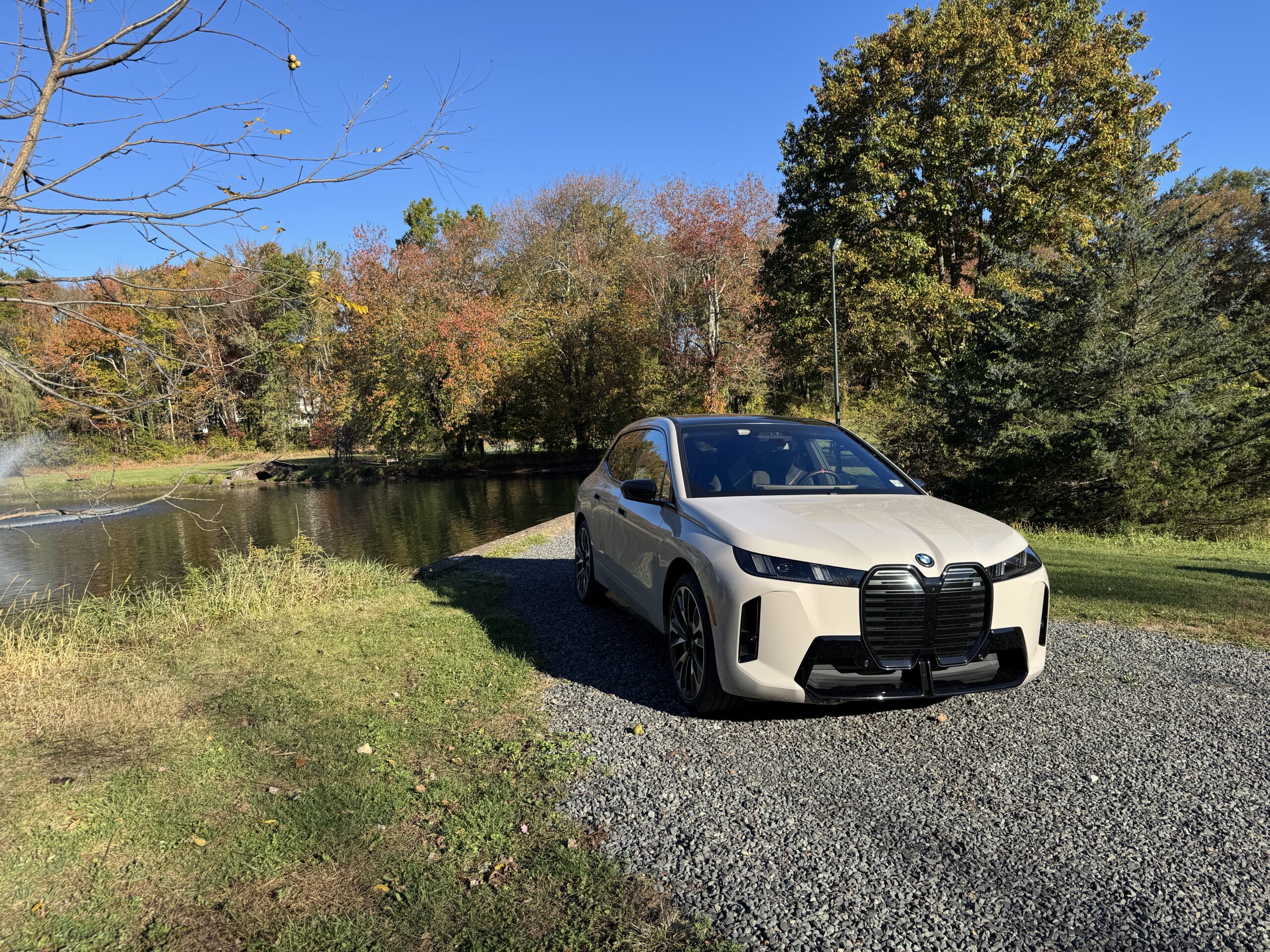As it’s now officially spring, when a young (or old) man’s fancy turns to thoughts of road trips with working air conditioning, I thought I’d post a quick primer to commonly-asked BMW 2002 air conditioning questions. (Actually, the real reason is that I just did a quick rundown of the issues for a guy in Bahrain, so it’s fresh in my mind.)
Did the BMW 2002 ever have factory air conditioning?
No. There were, however, three a/c systems installed by dealers: Behr, Frigiking, and Clardy. The Behr system is generally considered to have the most factory-looking console, which isn’t surprising, since the other BMWs from that era—the E3 (Bavaria) and E9 (3.0CS)—had factory a/c systems with Behr components. Here’s a 2002 with the Behr console.

The Behr factory-family-resemblance 2002 console.
Note how the console wraps around the shift lever in the same way the Behr a/c console in the 3.0CS does (the one in the Bavaria is quite similar as well).

The factory a/c console in Doug Dolan’s beautiful E9.
Neither the Frigiking nor the Clardy a/c consoles wraps around the shift lever, or at least they don’t do so with continuous side pieces. Here’s the Frigiking console. It has a bit of a squarish look.

Frigiking console. (Photo by Chris Roberts.)
The Clardy console has a triangular look that’s superficially similar to the Behr, but it’s chunkier-looking. In addition, it bulges out on the right side, since that’s where the fan is.

Clardy console. (Photo by Earl Meyers.)
Are there other differences between the three dealer-installed systems?
Yes. One of the most important differences is how the evaporator assembly (the part that lives under the dash on the transmission hump) is configured. Every evaporator assembly has three major components: the evaporator core, which is sort of a cold radiator; the expansion valve that meters the flow of expanding refrigerant into it (what actually “generates cold”); and the blower fan that moves air over the core to blow the cold air into the passenger compartment.
In the Behr system, the evaporator assembly is a plastic tub; the upper and lower halves are held together with metal clips. All three components—the core, expansion valve, and fan—are inside the tub. Thus, to service any component, the console and evaporator assembly have to be removed, then the assembly taken apart. It’s a bit of a pain.

The Behr evaporator assembly. You have to slide off those metal clips to pull the top off and expose the core, fan, and expansion valve.
In the Frigiking system, the evaporator core and blower fan are inside a plastic housing, but the expansion valve is external (it’s on the back). Thus the expansion valve can be replaced without dismantling the entire unit.

A Frigiking system viewed from the back showing the externally-mounted expansion valve. (Photo by Chris Roberts)
The Clardy system doesn’t have a deep tub-like evaporator assembly with an internal squirrel-cage fan like the Behr and the Frigiking. Instead, the evaporator core has a smaller plastic shrouding. There’s a newer-style block expansion valve that’s easily accessible on the back. The fan is actually on the side; it protrudes into the left side of the passenger footwell.

Front view of Clardy evaporator assembly. (Photo by Earl Meyers.)

Block-style expansion valve on the back of the Clardy.
Folks often complain about the Behr and the Frigiking blower fans being somewhat anemic and not moving a lot of air over the evaporator core. The fan in the Clardy seems to be a bit better.
There are differences in the compressors as well. The original Behr and Frigiking used the old big upright York compressor that looked like a lawnmower engine. The bracket for the compressor was big as well, and actually wrapped around the front of the engine, where it was held in place by one of the water-pump bolts. In contrast, the Clardy system was ahead of its time in using a Sanden 508 rotary-style compressor (meaning it has the form factor of a paint can instead of a lawnmower engine).

An old York upright piston compressor and bracket on the way to the recycle pile.

A Sanden 508 (clone) rotary-style compressor and bracket, similar to what was on the original Clardy system, being installed on my tii.
As far as the condenser (the heat-dumping part that sits in front of the radiator) goes, all three systems had old-school serpentine-style condensers (meaning one tube that snakes through the condenser like a serpent). The condenser on the Behr system was thick and had a big honking fan on it. I believe the Frigiking and the Clardy systems had smaller condensers, and I don’t think the Frigiking system had a fan on the condenser, which meant that performance would suffer if the car stopped moving.
Did BMW 2002 a/c ever work well? Is it even worth rejuvenating?
It worked adequately. It used R12 refrigerant (Freon), which is seriously great stuff. It didn’t blow as hard as many people would like, so with the 2002’s greenhouse of windows, in direct sun and high heat and humidity, it had a hard time keeping up with the solar load. If all that you do to rejuvenate it is convert it to R134a without any improvements, I can almost guarantee that you’ll be disappointed—but if you build in some improvements, you should have something functional.
What do you do to resurrect a dead a/c system in a 2002? Can’t I just recharge it?
Long story short, if your 2002 has non-working a/c, the system is broken. No system “just needs a recharge” (the title of my a/c book Just Needs a Recharge: The Hack Mechanic Guide to Vintage Air Conditioning is a joke, like “that’ll buff out”). Bare minimum, the leak has to be found, the leaking component has to be replaced, and the system then needs to be evacuated and recharged. And on many of these cars, the a/c hasn’t worked in decades—and in that case, you’re going to want to modernize it, which is like gutting a house. The R12 (Freon) refrigerant that was used up until the early 1990s has been phased out and replaced by R134a, which doesn’t cool as well, so you need improved components to stand a chance at getting a cold car.
The basic recipe to resurrect a dead a/c system is:
- Throw all of it away except the evaporator assembly.
- Replace the original piston compressor and bracket with a rotary-style compressor (usually a Chinese-made clone of the Sanden 508) and the bracket that mounts it to the block (available from a few sources, click-and-buy through BluntTech).
- Install the largest parallel-flow condenser that’ll fit in the nose (widely reported to be 10″ by 18″ for a 2002).
- Install the biggest fan that blows the most cubic feet per minute (CFM) on the condenser.
- Have all new hoses made and install a new receiver/drier.
- If the system has been sitting with the hoses cut, exposed to the environment, you’ll definitely want to remove the evaporator assembly and flush it out, as contaminants can clog the expansion valve. Even if it’s been sitting closed, removal and flushing is a good idea, because the polyalkylene glycol oil (PAG oil) used for modern R134a refrigerant isn’t the same as the mineral oil that was used with R12, and if R134a is used with mineral oil, acids can form that destroy the a/c components.

A 10″ by 18″ parallel-flow condenser and big Spal fan installed in the nose of a 2002.
My 2002 never had a/c. What’s involved in a from-scratch installation?
It’s not really that much worse than rebuilding the a/c in a car that already had it. People fixate on having to punch holes in the firewall; that’s trivial. It’s just two holes. One of them may already be there. The main issue is procuring an evaporator assembly that fits under the dash on top of the transmission hump and has a presentable-looking console in front of it. You’d then follow the recipe above, pairing it with a new rotary-style compressor and bracket, a new parallel-flow condenser and fan, and new hoses and receiver-drier.
If you like the look of any of the three systems that were originally dealer-installed, and have one of them lying around or find someone selling a used evaporator assembly and the console that goes with it, that’s the least expensive way to go. Remember that if you find someone selling a full a/c system removed from a 2002 and asking a lot of money because it’s “complete,” it’s really only the evaporator assembly and console that are of value; the piston compressor, condenser, old hoses, and the receiver-drier all need to be replaced.
If you want to buy a new evaporator assembly and console rather than a used one, you might look at the system from ICE Auto Air. Their evaporator assembly and console (often referred to on bmw2002faq.com as the “ICE a/c system”) appears to be very similar to the old Clardy system, so the result looks pretty close to one of the three original 2002 “dealer stock” configurations. ICE’s website is horrible (if you go here and scroll down, you can see the console), but folks on bmw2002faq seem to report good results. Here’s a link on bmw2002faq to some components of the ICE a/c system, including the evaporator assembly. I’ve personally never used the ICE system, though, and don’t know price or to what extent they try to sell you an entire system versus just an à la carte evaporator assembly and console.
There used to be occasional posts on bmw2002faq about people using a very small evaporator assembly from something like a Dodge Colt, but like Bigfoot and the Loch Ness Monster, I don’t believe anything was ever verified.
Can you do a climate-control system installation—replace both the heat and a/c with something modern?
When I use the term “vintage air conditioning,” as I do in the title of the book, what I mean is an a/c system that’s completely separate from the heating system. That is, in a car like a 2002, there’s an evaporator assembly that has its own controls and blower fan, and it’s completely separate from the heater box with its own controls and blower fan. In contrast, most modern cars have a single box with a heater core, an evaporator core, and a blend door inside it to mix the hot and cold air.
There are generic heater/evaporator climate-control boxes sold by vendors such as Vintage Air and Old Air Products who cater to the hot-rod and vintage-car markets, but there are several complications that make installation go substantially beyond a/c-only issues. The first is that you have to find a box that fits on the 2002’s transmission hump and under the dash. I believe that folks have told me that the Vintage Air Gen II Mini system fits (although it impinges into the glovebox area), but I can’t swear to it. There are some posts on bmw2002faq about installing the Old Air Products Hurricane IP-2100 system.
The second issue is that if you’re installing a climate-control box, not only do you no longer need the 2002’s heater box, but to get the box to fit, you need to remove the heater box and block off the hole that opens up in the firewall. What most folks don’t realize is that the 2002’s source of fresh air is through the heater box, so if you take it out and replace it with a climate-control box, you no longer have a source of fresh air. The argument for why that doesn’t really matter is that you can always still open the windows, and if you need to defrost the windshield, you now have a/c, and that works even better then fresh air. Here’s a link to a post of someone installing the Old Air Products Hurricane IP-2100 system, and dealing with many of the issues listed above. You can see that it’s not trivial.
The third issue with a climate control box is that none of the three of the 2002’s stock slider controls for heat and fresh air will work, since they connect to the car’s stock heater box that you will be removing. You’re going to need to figure out how and where to mount the controls that open up the flaps inside the CC box, and plumb the CC box’s vents so that they point at the windshield, footwells, and your face.
For all these reasons, I’ve never had any energy required for a climate-control installation. But I have seen 2002s in which folks have had them installed.

A Vintage Air Gen II Mini system I saw installed a few years ago. Note how the glovebox has been cut away to accommodate the fan, and how the stock heater-box slider controls above the vents have been replaced with rotary controls that open the flaps inside the box.
Where do you come down on the whole R12/R134a/alternative refrigerant thing?
Nothing cools as well as good old-fashioned R12 (Freon). Contrary to popular belief, it’s still legal to buy and use R12, subject to certain caveats—I still run it in my Bavaria—but it IS an ozone-depleting agent, and over time, for several reasons, I’ve moved away from using it. One is that, eventually, all systems leak, so R12 winds up in the atmosphere, and I’m less and less comfortable with that. The other is that so few cars have it that very few commercial shops still have the equipment to evacuate it, so you wind up being the only person who can service your a/c system. That’s fine with me, as long as I continue to own the car. If I sell it, it’s problematic for the next owner.
To use R12’s replacement, R134a, in a 2002 a/c system, and be happy with the result, you really need to update the compressor, condenser, and fan, or else there’s very little chance you’ll be satisfied—and even then, if you live in a hot, humid climate, you might not think that it works well enough. There are other refrigerants, but you run into the same problem as with R12: You become the only person who can service your a/c system.
Really, the best possible thing you can do is drive someone’s 2002 with an a/c system set up the way you’re thinking of doing yours, in your climate, and see if you like it. It’s a big community. We’re a friendly bunch. If you’re in Boston, you can drive mine.
Can’t you just use R75/2 (75 mph, two windows down)?
Sure. And that works fine, until it doesn’t. It’s fatiguing on long trips. [At this point the editor, who regularly crosses the country top-down, is sneering at my wimpish fatigue.]—SC
The way that I look at it, having working a/c in my vintage cars increases my use of the cars, which in turn dramatically increases my enjoyment of them. You probably spend gobs of money on bodywork, paint, engine mods, suspension mods, tires, Recaro seats, on and on. Why not actually make yourself cool?—Rob Siegel
Rob’s book Just Needs a Recharge: The Hack Mechanic Guide to Vintage Air Conditioning is available on Amazon here. Signed copies of all his books can be ordered directly from Rob here. Rob’s upcoming book, The Best Of The Hack Mechanic: 35 years of hacks, kluges, and assorted automotive mayhem from Roundel magazine, will be out in the spring (hopefully in time for the Vintage).





















